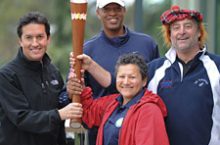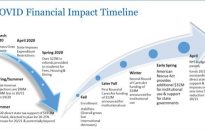Share on PinterestBrief episodes of intense exercise may help mitigate the chances of significant cardiovascular occurrences, particularly in women. Image credit: Maksim Tarasov/Stocksy. Previous research indicates that engaging in sufficient physical activity can reduce an individual’s chances of experiencing major adverse cardiovascular events (MACE). Experts from the University of Sydney have discovered that merely 1.5 […]


- Previous research indicates that engaging in sufficient physical activity can reduce an individual’s chances of experiencing major adverse cardiovascular events (MACE).
- Experts from the University of Sydney have discovered that merely 1.5 to 4 minutes of quick, intense exercise distributed throughout the day could diminish a person’s MACE risk.
- This association was notably more pronounced among female subjects in comparison to male subjects.
“Lack of physical activity is a significant public health concern linked to
“There is an urgent necessity to discover practical means to encourage physical activity. While structured exercises like gym workouts, running, or fitness classes are excellent toward these objectives, only 20% of the middle-aged and older population engage in such activities regularly,” he emphasized.
Stamatakis is the main and corresponding author of a recent publication in the British Journal of Sports Medicine that established that brief bursts of high-intensity activity throughout the day—scientifically termed vigorous intermittent lifestyle physical activity (VILPA)—such as opting for stairs instead of an elevator or transporting groceries over a short distance, may help decrease the MACE risk, more significantly in women.
In this investigation, researchers examined data from the UK Biobank, involving over 103,000 middle-aged men and women with an average age of 61. Each participant had utilized an activity tracker continuously for a week between 2013 and 2015.
Approximately 22,000 participants reported not adhering to any structured exercise plans or engaged in merely one leisure walk each week, while the rest stated they exercised regularly.
Researchers employed the activity trackers to identify which participants engaged in VILPA throughout the day and for what duration.
“Incidental physical activities, which are part of our daily lives, present many untapped possibilities, yet we lack understanding on the most effective ways to promote them and support individuals—VILPA serves as such an option,” Stamatakis elucidated.
“These consist of brief bursts of vigorous incidental activities, typically ranging from 10 seconds to 1 minute, integrated into everyday life. This form of activity may be more practical than structured exercise for many, as it doesn’t necessitate preparation, time investment, or traveling to a venue to be active,” he clarified.
“Utilizing advanced wearable measurement technologies that enable us to examine the impact of daily movements at a granularity of 10-second intervals—our goal was to assess the influence of VILPA on major cardiovascular diseases,” Stamatakis added. “No previous studies have visualized this.”
The cardiovascular health of study participants was monitored up until November 2022.
Upon examination, researchers determined that female participants who did not follow a structured exercise plan but recorded an average of 3.4 minutes of VILPA per day had a 51% lower likelihood of experiencing a heart attack, a 67% reduced risk for heart failure, and a 45% diminished likelihood of developing any form of MACE compared to female participants who did not engage in any VILPA.
Moreover, scientists found that for women, even VILPA levels of 1.2 to 1.6 minutes a day corresponded with a 40% lower risk of heart failure, a 33% reduction in heart attack risk, and a 30% decrease in all MACE types.
“This discovery is significant for two main reasons,” Stamatakis pointed out. “Firstly, it indicates a substantially smaller quantity of physical activity than any existing exercise recommendations, and this activity is incidental—suggesting it may be simpler for many to integrate into their everyday routines.
“Secondly, we must not assume that minimal amounts of VILPA provide a quick resolution to a complex issue like physical inactivity,” he continued.
“The positive correlations we detected were in women who engaged in brief bursts of VILPA almost daily, several times a day—averaging nine to ten bursts. Establishing such behavior as a habit isn’t necessarily simple. Our findings demonstrate that even small amounts of high-intensity activities can assist and might be the key to fostering a consistent exercise or physical activity habit in the long run. For those unaccustomed to vigorous exertion, support will often be needed to cultivate this habit.”
– Emmanuel Stamatakis, PhD
Observing male participants, those averaging 5.6 minutes of VILPA daily, who did not participate in structured exercise, exhibited a 16% decreased risk of experiencing any type of MACE compared to those who did not register any VILPA. However, researchers found no significant link between VILPA and individual types of MACE.
“It is difficult to hypothesize why this occurred; our study was not particularly aimed at understanding mechanisms,” Stamatakis remarked.
“Nevertheless, there is a reasonable chance that because men’s relative VILPA intensity was only 70% compared to 83% for women—approximately 20% higher—[indicating] that women exerted themselves more during VILPA periods, leading to a significantly lower long-term cardiovascular risk in women.”
“We are currently exploring the relationships between incidental physical activities of all intensities—light, moderate, and vigorous—and their association with heart disease risk,” he further added. “We’re deeply interested in determining the ‘heart health value’ of every minute spent in moderate and light activities versus vigorous activities.”
After reviewing this study, Cheng-Han Chen, MD, a board-certified interventional cardiologist and medical director of the Structural Heart Program at MemorialCare Saddleback Medical Center in Laguna Hills, CA, expressed to MNT that it is very encouraging to observe such considerable advancements in cardiovascular disease-related mortality with seemingly minimal vigorous exercise—something that could realistically be accomplished by most individuals.
“Cardiovascular disease remains the leading cause of morbidity and mortality worldwide, hence any measures we can implement to alleviate that disease burden will significantly benefit public health,” Chen continued.
“We actively promote lifestyle interventions that individuals can execute independently to enhance heart disease risk as a form of preventive medicine, rather than awaiting disease progression before we intervene, either through medication or procedures,” he conveyed.
MNT also consulted with Rigved Tadwalkar, MD, a board-certified consultative cardiologist and medical director of the Cardiac Rehabilitation Center at Providence Saint John’s Health Center in Santa Monica, CA, regarding this study.
“My first impression of this study is one of positivity,” Tadwalkar remarked. “The results imply that even small amounts of VILPA can substantially lower the risk of MACE in women who generally do not engage in structured exercise. This is particularly reassuring for individuals who struggle to adhere to conventional exercise regimens due to time restrictions, physical constraints, or other barriers.”
“This research underscores the potential for incorporating short, intense physical activities into everyday routines as an alternative to traditional exercise programs, offering a practical and accessible approach to enhancing cardiovascular health,” he added. “The gender-specific findings also highlight the significance of personalizing exercise advice to suit individual requirements, fostering more tailored and efficacious preventive and treatment strategies.”
For individuals aiming to boost their daily VILPA, Chen suggested various activities that can be integrated into their day for brief durations.
“One of the simplest tricks would be to leverage your environment,” he indicated. “For instance, if stairs are available in your home or workplace, taking 1 to 2 minute brisk walks up and down the stairs a few times daily could achieve what the study has demonstrated. This research also indicates that engaging in vigorous daily tasks such as carrying heavy groceries could yield similar cardiovascular benefits.”
Tadwalkar recommended setting reminders to move every hour, which can encourage these brief but intensive exercises.
“Numerous smartwatches and wearable gadgets are capable of providing this functionality,” he continued. “For those working remotely or in office environments, contemplate utilizing a standing desk and/or occasionally execute quick exercises—effective options include jumping jacks and squats.”
“The essential factor is to identify opportunities for elevating the heart rate in short bursts throughout the day, making physical activity both achievable and impactful,” Tadwalkar added. “These tactics not only aid in diminishing cardiovascular risk but can also enhance overall vigor and general health.”


















 @Boston Celtics #NBA #Basketball #Celtics #JaysonTatu…
@Boston Celtics #NBA #Basketball #Celtics #JaysonTatu…
 #NBA #basketball #NBAXmas #Jalen…
#NBA #basketball #NBAXmas #Jalen…






 #McLaren #F1 #Gingerbread #CapCu…
#McLaren #F1 #Gingerbread #CapCu…












 CMA Members get access to my “AXEL TECHNIQ…
CMA Members get access to my “AXEL TECHNIQ…




 #rugby #haka
#rugby #haka









